
|
 MAY 2021 MAY 2021
|
Welcome to the second quarter of 2021 – and the second edition of KeyNews. I trust your year is off to a good start. It is pleasing to see domestic and trans-Tasman travel resume, as I’m sure you are equally pleased in how Australia and New Zealand have managed the pandemic compared to other parts of the world.
A lot has happened in the first few months of 2021 and I am delighted to share several highlights. We have released many product/content enhancements, including:
- Lexis Advance® (AU): Citing Paragraphs Tab in CaseBase® – enabling users to review and assess the relevance of specific passages to their research before clicking to the full text
- Lexis Red® (AU & NZ): SSO Technical Release for Windows OS – allowing users to access Lexis Red windows app using their network credentials to log in
- Multi-Format (Core Content) (AU):
- Personal Injury NSW (PIN) – New Guidecard – New ‘Table of Quantum Damages’ guidecard
- Foreign Investment Regulation (FIR) – Major Content Updates – Major overhaul from new author (12 Chapters updated in past 3 months)
- Occupational Health & Safety NSW (OHSN) – Extensive Updating, New Author Team – McCullogh Robertson commissioned for the publication. Scarlet Reid (Partner) and Nathan Roberts (Senior Associate) have taken authorship of OHSN (vacant for two years). The Work Health Safety Act annotation has new commentary
More details on product / content enhancements are included in this issue of KeyNews.
For the remainder of 2021, we continue on course to ensure our ‘Why’ (Our Purpose: Power just outcomes one decision at a time) permeates all that we do as a company for you, our valued clients and partners. This purpose drives our vision – simplicity of service.
Our team is here to empower you to make even better, even faster decisions.
All the best,
Bill Sisson
Did you like the article?
Books
The next three months will see a number of key titles being released. Two much anticipated titles are Assaf, Winding up in Insolvency 3rd edition and Luntz and Harder’s, Assessment of Damages for Personal Injury and Death 5th edition, both anticipated to reach shelves in July.
To assist practitioners to navigate through the innumerable changes that have happened in the space in the last few years, we have a Quick Reference Card on Insolvency, authored by David Brown. Annotated Civil Liability Queensland 5th Edition and Crime and Mental Health Law in New South Wales, Supplement to the third edition will be publishing to address changes in these areas.
Also releasing is the third edition of Australian Personal Property Securities Law by Anthony Duggan (May 2021) and Securities and Financial Services Law 10th edition by Justice Ashley Black and Pamela Hanrahan (April 2021).
Other titles anticipated to publish by September 2021 are:
- Workplace Safety and COVID by Michael Tooma and Mary-Louise McLaws
- Gentleman’s Agreements: Theoretical and Practical Aspects of Agreements of Trust by Anton Trichardt
- Information Privacy Governance and Regulation: An E-Commerce Perspective by Thillagavathy Rajaretnam
- Family Provision in Australia 6th edition by John de Groot and Bruce Nickel
- Ethics and Professional Practice in Financial Planning by Michelle Cull, Michael Miller, & Csilla Skultety
- Petroleum Law in Australia 2nd edition by Tina Hunter and John Chandler
- Law of Costs 5th edition by Gino Dal Pont
- Royal Commissions and Public Inquiries in Australia 2nd edition by Scott Prasser
- Windfall Equity and the Joint Endeavour Principle: Restatement of the Principles in Muschinski v Dodds by Dane Bryce Weber
Did you like the article?
Capital Monitor™
Sunset Maples set the tone for Budget in May

May is often thought to be the best time of year to visit Canberra. Cloaked in shades of coffee, gold, orange, and red the scenic landscape bids goodbye to autumn with its Sunset Maples bursting alight in vivid crimson. One specific Maple, where Australian Treasury holds many post-Budget press briefings, has been christened as the Budget Tree. This is because, every year as it glows at its brightest, the Australian Government, after months of preparation, issues its estimated revenue and expenditure for the financial year ahead, alongside forward-looking fiscal policy for the nation.
For many in government and the media, Budget Day, traditionally held on the second Tuesday of May, is easily the biggest day of autumn. Each year, absent a global deadly pandemic, hundreds of journalists, lobbyists and industry representatives converge on the nation’s capital to join politicians for Federal Budget, and the peculiar ritual of all that happens before, during and after the Budget Media Lock-up. The implications for business are many, from business tax reform to infrastructure spending, or from aged care to defence.
Only accredited members of the media and other relevant stakeholders are granted access to the six-hour Budget Lock-up, where they get firsthand look at highly sensitive market information, strictly embargoed and released to the general public only at 7.30pm on Budget Night. The information traditionally includes several Budget Papers, Government Appropriations Legislation, Budget Portfolio & Ministerial Statements, Media Releases, as well as the Treasurer's Speech.
Housed in the Parliamentary Press Gallery in Canberra, Capital Monitor has not missed the Lock-up since the 1990s. Each year budget material is processed into fully indexed and text searchable PDFs and queued to load on to the database for search and retrieval as soon as embargo lifts. This is where subscribers from all walks of life have come to rely on the Capital Monitor panel of experts to gather, dissect, digest, and deliver pertinent budget-related material as soon as it is released. While in lock-up, the editorial team also prepares a comprehensive Federal Budget Report, highlighting key financial measures, portfolio by portfolio, that link through to the appropriate pages within the original source documents for easy reference. This is published to subscribers on Budget Night, and as soon as Lock-up ends.
This year, Capital Monitor will yet again deep dive into budget measures covering health and energy, social services, employment, education, superannuation, and all things tax and business to deliver a comprehensive wrap-up of the 2021-2022 Federal Budget. All measures will be scrutinized in depth including implications for yet to be legislated reforms expected to steer the Australian economy to post-pandemic recovery.
The buzz of the day will likely carry over well into the night, albeit physical distancing, with coverage of industry reaction usually humming to an end by midnight. All content will be live on the Capital Monitor website on Budget Night.
Did you like the article?
Halsbury’s® Laws of Australia
The team behind Halsbury's have been steadfastly updating this authoritative reference so you can stay ahead of the rapidly changing legal landscape.
Each topic is written by an expert, then reviewed by a distinguished editorial panel and is intensively checked to give users confidence in its accuracy.
An unprecedented 10,930 pages of changes, across 18 titles within the service have been published since March 2020, across (but not limited to) these topics:
- Arbitration
- Banking and Finance
- Betting, Gaming and Lotteries
- Consumer Credit
- Contract
- Corporations
- Criminal Law
- Damages
- Environment
- Evidence
- Family Law
- Industrial Law
- Intellectual Property
- Local Government
- Maritime Law
- Police and Emergency Services
- Practice and Procedure
- Professions and Trades
- Public Health
- Social Welfare and Services
- Superannuation
- Trade and Commerce
- Water
- Weapons and Dangerous Goods
Further updates are scheduled over the coming months to the following titles, including (but not limited to):
- Criminal Law
- Local Government
- Mental Health and Intellectual Disability
- Restitution
- Statutes
- Superannuation
Did you like the article?
High Court Analyser
Improved design and new features
High Court Analyser was the first of many subscription-based legal analytics solutions launched by LexisNexis Pacific as part of the Lexis® Legal Analytics suite. An intuitive dashboard view provides insights from High Court of Australia judgments, enabling customers to find leading cases by representation, judge or party and offers a view of professional networks and profiles. Outcome analysis shows trends in case law drawn from over 17,000 judgments. These judgments comprise of 8,000+ special leave applications, 6,000+ appeals and 2,000+ original jurisdiction/first instance cases.
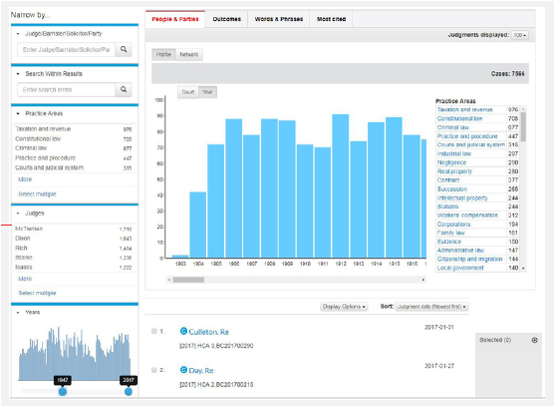
Launched in 2017, the previous version of the HCA Analyser provided Australian lawyers with unprecedented insights.
With the recent updates, the High Court Analyser presents a new look, improved performance and enhanced features. These enhancements make it easier to navigate through an expanded content set and understand the full impact of litigation activity before the High Court.
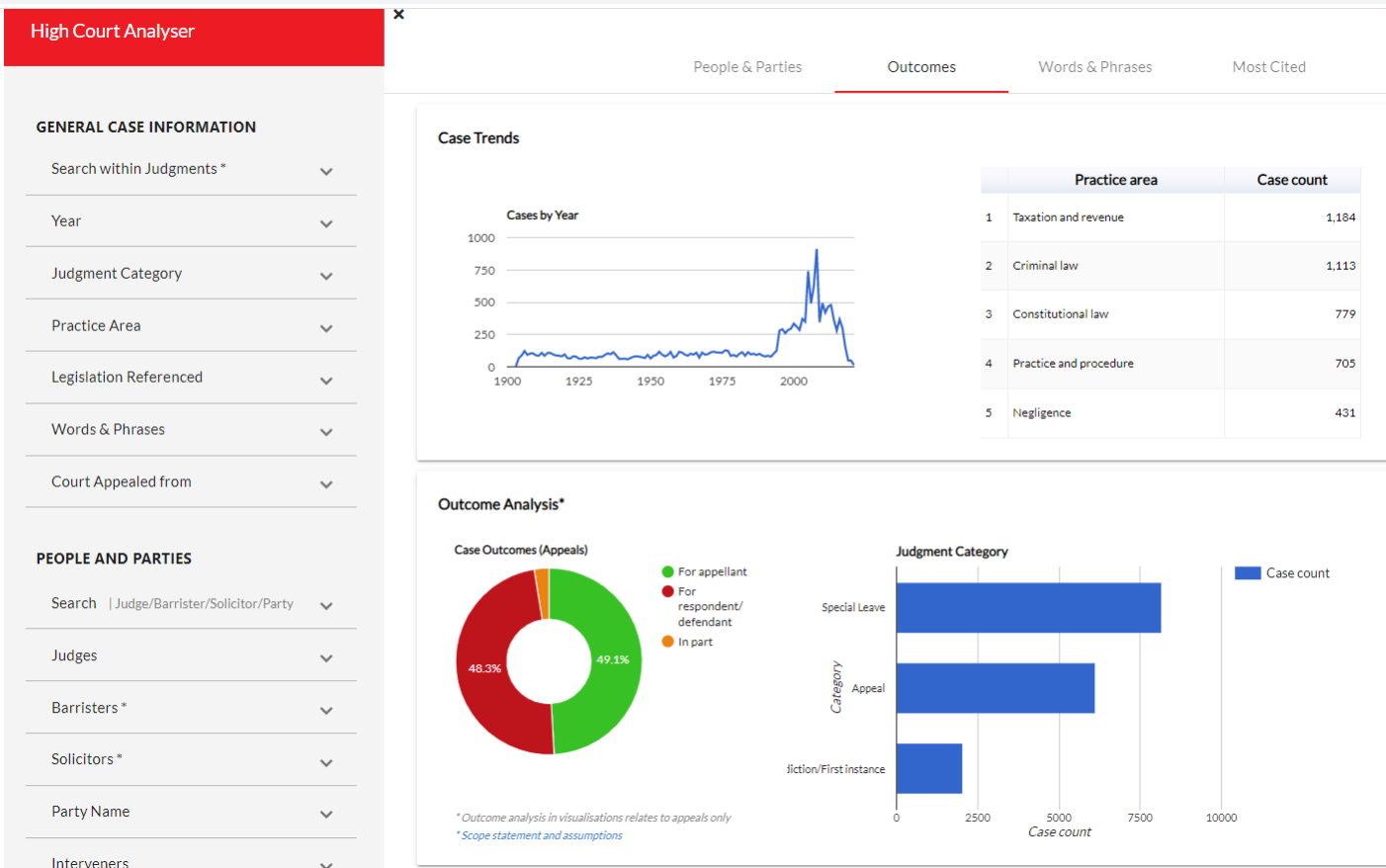
The ‘new’ HCA Analyser - Outcomes dashboard on HCA Analyser gives valuable insights into case trends (by year and practice area), an analysis of outcome (Appeals) and judgment categories. The graphs and donut are interactive and can be used as filters to refine the case list.
The release of the improved High Court Analyser includes:
- A new look and feel – the user experience is now aligned with all other modules in the market; the user interface is more intuitive, visually interactive and makes the analysis more accessible than before;
- A performance upgrade –-the new High Court Analyser retrieves results faster and more efficiently;
- An expanded content set – metadata about special leave applications is now available in the application so users can see trends, such as data on practice area and year of application. Note: the full text of HCASL and HCATrans decisions are generally not held. Entries will be included in the case list for awareness, but the decisions will not be searchable unless available in the URJ dataset; and
- Enhanced features – outcome visualizations, better page navigation and the ability to select more than one element from across filters to refine the case list users wish to examine.
This powerful combination of features on High Court Analyser gives users an unparalleled ability to analyse trends and patterns to enable the practise of law and streamline legal research in a more visually engaging manner.
Did you like the article?
Lexis Advance
2020 in Review: How Searches Reflect COVID’s impact on the Australian Legal Profession
Among the key strengths of the Lexis Advance platform are its powerful search engine, sophisticated relevance ranking and smart filtering options. We invest in an ongoing program of research and innovation, combining AI with local legal expertise to deliver a superior experience.
To better understand the needs of practitioners and prioritise our roadmap, we examine anonymised usage data about searches on the Australian Lexis Advance platform. A recent review revealed a number of insights into the impact of COVID on the legal profession in 2020, with some residual ongoing effects for 2021.
What can we learn from search?
Search data reveals the nature of concerns for the legal profession and justice system in quite an immediate fashion as researchers commence investigation very early in the life of a matter, even before an issue formally becomes a ‘matter’. Of course, search data cannot provide a complete picture of all topics being investigated as many practitioners will browse a favourite publication to get answers, but query trends can indicate how the general level of interest in a subject changes over time.
Due to the sheer number of law students and the research-intensive nature of their studies, Universities and Law Schools make up a large proportion of our search data. The Academic sector ran around 47% of total annual searches on the platform in 2019; this did not change in 2020 and is on track for 2021. However, the seasonality of the sector means that Academic use is concentrated in March to May and August to October, and tends to focus on conceptual legal issues and well-established principles. This is particularly illustrated by search queries including the word ‘Mabo’1, only 6% of which come from outside the Academic sector. The average monthly number of searches using this term more than doubles in March each year, reflecting its status as a key case for discussion in foundational legal classes and as a classic research example in Legal Research Skills courses.
The impact of COVID2
One of the big initial concerns about COVID was that it would lead to less work for practitioners, but our data does not reveal a significant drop, with the total number of searches in 2020 only 0.18% lower than in 2019. This was driven by a slower start to the year with data from Q1 2020 showing 2.6% fewer searches than Q1 2019 but by Q4 2020 the trend was reversed, with over 3% more searches being run than for Q4 2019.
As you’d expect, the search term ‘COVID’ took off in 2020 and remains strong. Its first appearance in February 2020 was followed by a spike in April and May before settling into a fairly high monthly average of 126 queries over the last 12 months. By contrast, searches on Lexis Advance using the term ‘corona’ or ‘coronavirus’ spiked briefly in March 2020 but rapidly fell off and largely ceased from November 2020, probably due to legislative drafters around Australia typically adopting ‘COVID-19’ in naming conventions for the large number of emergency and amending instruments necessitated by the pandemic.
Strongly correlated with the arrival of COVID is the spike in searches using the term ‘frustration’3 from March to May 2020, during which period the monthly average for such queries more than quadrupled. An even starker illustration is the way searches including the phrase ‘force majeure’4 went from a monthly average of 38 in 2019 to a monthly average of 255 in 2020, peaking in March 2020 at almost 1400 queries. These searches clearly reflect the speed with which parties around Australia foresaw the consequences of the pandemic for their contractual relationships. We can safely forecast a significant uptick in litigation on these issues in 6 to 12 months once alternative avenues for resolution have run their course.
Returning to the (new) normal
One sign the courts will be back to pre-COVID levels shortly can be found in the recent increase in searches mentioning ‘security for costs’5. Throughout 2020 these searches remained low, with the annual total only 66% of 2019’s. However, despite the first few months of the year traditionally being slow due to court closures, January to March of 2021 are showing almost 17% growth on pre-COVID Q1 2019 figures.
Despite considerable initial concern regarding the impact of COVID on consumers, we saw a 5% drop in search queries mentioning the Competition and Consumer Act during 20206. The first quarter of 2021 indicates that any lull in this space won’t last, with the number of queries already 25% higher than for the same period in 2019.
Conclusion
The legal industry tends to think of analytics as being about the insights we can glean from traditional legal content such as by extracting penalties from case law. However, opportunities to better understand the justice system and the business of law exist at every intersection between legal professionals and the wider world. Organisations that invest in staff data literacy and building analytics capabilities will be able to recognise these burgeoning data sources and use them to competitive advantage.
1Mabo v Queensland (No 2) (1992) 175 CLR 1; 17 ALR 1 in which the High Court recognised the existence of Native Title as stemming from the connection between Australia’s indigenous population and the land, in accordance with traditional laws and customs, predating the arrival of the British.
2All data from this point is cross-segment data, ie it reflects all searches run on the Australian Lexis Advance platform, including those run by the Academic sector.
3‘Frustration’ is defined, in relation to contract law, as the ‘situation where a contractual obligation has, without the default of either party, become incapable of being performed, because the circumstances in which performance is called for would render it a thing radically different from that which was undertaken by the contract’: Encyclopaedic Australian Legal Dictionary, LexisNexis (online, May 2021).
4‘Force majeure’ is defined as ‘a coercion which cannot be resisted; a superior force. A circumstance beyond the control of a party to a contract, which enables that party to escape liability for failing to perform the contract as a result of the circumstance’: Encyclopaedic Australian Legal Dictionary, LexisNexis (online, May 2021).
5‘Security for costs’ is defined as ‘The deposit of moneys with a court or the provision of some other acceptable form of collateral to meet the possibility that the party ordered to provide security will fail in the proceedings and will be unable to pay costs ordered against that party in favour of the party seeking security’: Encyclopaedic Australian Legal Dictionary, LexisNexis (online, May 2021).
6Note that this number does not include queries where the reference to the Act has been shortened such as ‘CCA’ or ‘ACL’, nor does it include searches using provision titles such as ‘false or misleading’.
Did you like the article?
LexisNexis Practical Guidance
Practical Guidance Dispute Resolution – now live!
This new Practical Guidance module provides step-by-step guidance on informal and formal mechanisms of dispute resolution, addressing the fundamentals and procedural steps of civil procedure across Australian federal and state courts and tribunals. Tailored to each specific jurisdiction, lawyers can work efficiently through tasks with how-to guidance and additional resources located in easily identifiable topics structured to mirror formal litigation proceedings.
Intended for lawyers in firms dealing with civil disputes as well as barristers conducting matters across different levels of court, the Practical Guidance Dispute Resolution module in Australia is a practical companion to our existing civil procedure analytical works.
Available now for subscription on Lexis Advance, the Dispute Resolution module includes coverage of the Federal, NSW, Qld and Vic jurisdictions with further plans for jurisdictional expansion of other states and territories in the coming months.

New Practical Guidance Banking & Finance Loan Transaction Toolkit
Launched in April 2021, this toolkit provides a roadmap of a lawyer’s workflow during a typical loan transaction. It enables users to quickly find links to relevant guidance notes, precedents and checklists in the Banking & Finance module, allowing for drafting and transacting efficiency.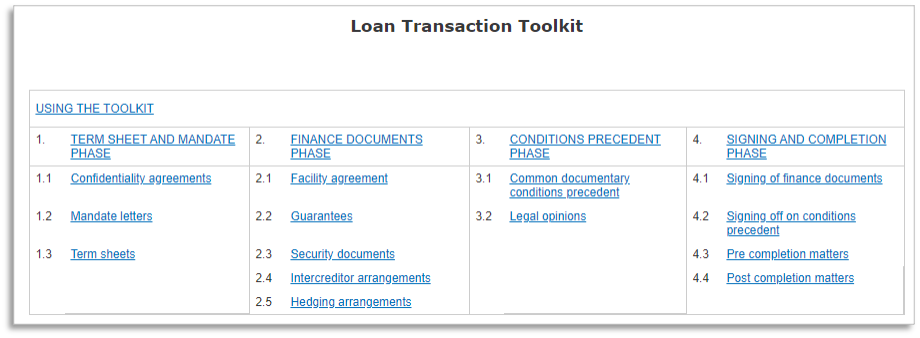
Corporate training materials – competition law
Need to conduct competition law compliance training for your organisation? We have specially crafted white-labelled presentation files for you to integrate with your organisation’s branding ready to conduct training on essential competition law compliance.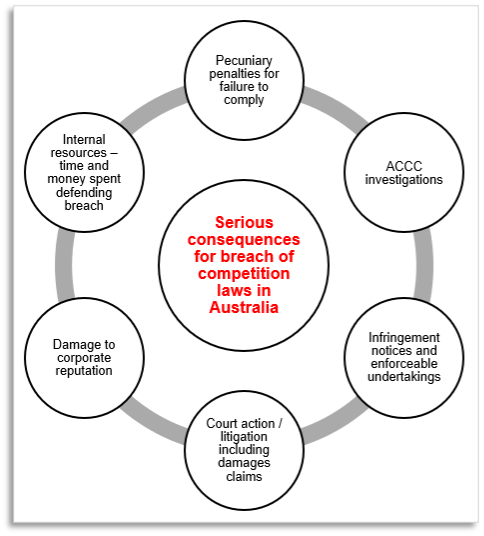
Expanded simple will tool – Practical Guidance Succession
Now covering all states and territories in Australia, the simple will tool allows you to quickly create the first draft of a simple will for a client. A companion Family and Financial information interview allows you to collect details from your client in an initial interview and then reuse that information on completing the will during a second interview.Practice Area Round-Ups
The latest news and developments in your practice area, delivered directly to your inbox. The fortnightly Practice-Area Round-Ups are available as part of your subscription to Practical Guidance. A new Dispute Resolution Round-Up was launched in April 2021. Round-Ups are also available for: Banking & Finance; Business; Competition; Consumer; Corporations; Cybersecurity, Data Protection & Privacy; Dispute Resolution; Employment; Insolvency & Restructuring; Intellectual Property; Mergers & Acquisitions; and Property.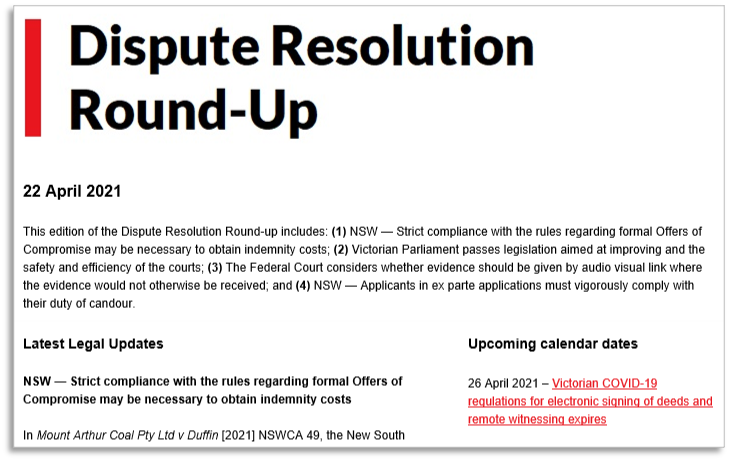
Practice area highlights
- PG Banking & Finance – New Signing Tool (including practice tips) to help practitioners quickly generate the appropriate signing blocks for their documents; new Consumer Data Right Toolkit for Banking & Finance to help practitioners keep track of updates in this space; new precedent Term Sheet (including drafting guide) for practitioners to use as is or to sanity check their document against; in our Key Developments subtopic, we have guidance on (1) electronic signing (including the various temporary measures put in place at the federal and state/territory level in response to COVID-19) and (2) LIBOR transition, and will keep these regularly updated to assist practitioners to stay on top of the latest developments on these areas of reform.
- PG Business – A new Restructuring subtopic has been added to the Insolvency topic. This will assist practitioners in coming to terms quickly with the insolvency reforms that came into effect on 1 January 2021. The new Signing Tool, added to the Toolkit in March 2021, is an easy-to-use tool that helps practitioners easily produce the correct signing block for agreements or deeds (including deeds poll).
- PG Competition – A new Competition Mergers Case Tracker is planned for delivery mid-year, summarising recent mergers and acquisitions notified to the ACCC. This will save practitioners valuable research time enabling them to advise clients on prospects of proposed M&A activity. A new toolkit has been developed offering a competition law compliance training program (including a PowerPoint presentation and quiz), as well as new guidance on restraint of trade, ACCC court processes and ACCC investigations (including market studies and price inquiries).
- PG Consumer – Updated guidance on pricing practices, the Consumer Data Right regime, ASIC’s product intervention power and design and distribution obligations.
- PG Corporations – New content on climate-related issues in shareholder activism (guidance), responding to shareholder activism (checklist), practical tips for complying with directors’ duties (checklist), share buy-backs (guidance and checklists) and access to information by directors and their confidentiality obligations (guidance) have been added to the module to help corporate lawyers stay abreast of topical and frequently-recurring issues in practice. On the insolvency front, a new sub-topic on the restructuring regime has been added to help lawyers quickly come to grips with the insolvency reforms that started on 1 January 2021, and guidance now includes the new simplified liquidation process. Expanded guidance to accompany the Signing Tool has been published by the end of April 2021.
- PG Cybersecurity, Data Protection & Privacy – Updated guidance in the Privacy and Data security topics to reflect current law and best practice.
- PG Employment – New subtopic on Data, Privacy and Surveillance; new comparative table tool and guidance notes on monitoring and surveillance in the workplace; updated guidance on COVID-19 vaccinations – mandatory or optional.
- PG Insolvency & Restructuring – The tool to generate statutory demands has now been expanded to a full Winding Up Tool, covering documents for the entire process to wind up a company. New guidance has been added on the new simplified liquidation process, allowing practitioners to quickly get up to speed with the new aspect of Insolvency law. The coverage of Voidable Transactions has been expanded to provide broader coverage and new practice tips for practitioners acting for parties and defending voidable transaction claims.
- PG Intellectual Property – A new topic “University IP in research and training” has been added to the module. Prepared by specialist external authors this new sector-focused topic sets out the practical aspects of advising on IP issues in universities. Additional guidance has been added on the complex area of copyright joint authorship, with copyright protection expanded for ease of customer use. The International Comparator tool has been updated to add Patents and Designs. And client training materials have been updated and enhanced with presentations available for separate download to allow for ease of customisation.
- PG Mergers & Acquisitions – Updated guidance on tax considerations for public and private M&A transactions. A new topic on incorporated joint ventures is also being prepared by specialist authors at Mills Oakley, providing guidance on setting up, managing and exiting a corporate joint venture, planned for publication in July 2021.
- PG Property – Guidance across Leases, Taxation and revenue, Sales and purchases, Retail leases, Residential leases and Encumbrances has been updated to provide step-by-step guidance in line with recent changes to law and practice. Precedents in Retail and Commercial Leases have been updated to align with ongoing changes to the law, including those impacted by COVID-19. Multiple checklists have been enhanced and improved in line with recent changes to law and practice. The Residential Tenancies topic is being overhauled to reflect changes to the law in Victoria, with updates to be published in May 2021.
Did you like the article?
Practice Area Updates
Criminal Practice and Procedure NSW
Important new Act and Regulations inserted and annotated: Mental Health and Cognitive Impairment Forensic Provisions Act 2020
NSW
The Mental Health and Cognitive Impairment Forensic Provisions Act 2020 (replacing the Mental Health (Forensic Provisions) Act 1990) and Regulations (which both commenced 27 March) have been published in Criminal Practice and Procedure NSW, with around 40 annotations to the new Act, giving customers comprehensive and current commentary on an important new legislative framework.
Civil Procedure Western Australia
Increased interest in guidance about methods of alternative dispute resolution in Western Australia
WA
Civil Procedure Western Australia now features the annotated Supreme Court (Arbitration) Rules 2016, in response to growing interest in and recourse to arbitration as a dispute resolution option in Western Australia, coinciding with Perth's rising status as an international arbitration hub.
Australian Property Law Bulletin
Amendments to Australia's foreign investment policy laws and regulations
FEDERAL
The Foreign Investment Reform (Protecting Australia's National Security) Act 2020 (Cth) came into effect on 1 January 2021. The Australian Property Law Bulletin has published an article setting out the changes in the law and discussing what these changes mean for commercial real estate transactions and legal practitioners practising in this area.
Ritchie's Uniform Civil Procedure
Recent key cases including Energy City Qatar Holding Co v Hub Street Equipment Pty Ltd (No 2) [2020] FCA 1116 and Ku-ring-gai Council v Ichor Constructions Pty Ltd [2019] NSWCA 2
NSW
In response to these significant cases affecting commercial arbitration, Ritchie's Uniform Civil Procedure NSW now offers revised content, all new content and case discussion on the Commercial Abitration Act 2010, including information around appeals, arbitral awards, enforcement of awards, offers of compromise and much more.
Patents Trade Marks & Related Rights
The High Court decision of Calidad Pty Ltd v Seiko Epson Corp [2020] HCA 41
Federal
In this decision the High Court majority adopted the exhaustion of rights doctrine over the implied licence doctrine, thereby changing more than a century of Australian patent law. The majority and minority decisons also examined the nature of the rights enjoyed by a patentee, the original or “downstream” purchaser, the effect of modifications made by a purchaser, and the comparison between “repair” and “making”. Patents, Trade Marks and Related Rights has been updated with commentary on this landmark decision and its implications for practice.
Civil Procedure Tasmania
The Supreme Court decision of McCarthy v Saltwood Pty Ltd [2021] TASSC 1
Tasmania
McCarthy v Saltwood Pty Ltd [2021] marked the completion of litigation in this matter around a family trust by resolving a costs dispute between the widow and her children. In the substantive matter, the children had a loan to repay to the mother, as well as issues about distributions under the trust, and the use of trust monies. Earlier in the litigation the children made an offer of $850,000 to the mother to repay the loan, and requested that she would repay trust payments that the children were owed. The widow rejected the offer. In the end, judgment in the substantive trust matters was found for the mother and she was awarded $363,000, substantially less than the compromise offer made pre-trial and thus triggering a penalty set out in r 289 of the Supreme Court Rules (Tas). The decision revisits the law on this area and importantly has obiter on ‘indemnity costs’ (which were argued for, but denied in the judgment). The annotations to this rule have now been updated in Civil Procedure Tasmania. This rule is an important one, and to have had the principles revisited recently was important to the Tasmanian profession. This type of rule exists in most other Australian courts and thus has additional relevance.
Competition and Consumer Act Annotated / Australian Consumer Credit Law / Practice and Procedure High Court and Federal Court
The ongoing rollout of the Financial Sector Reform (Hayne Royal Commission Response) (2019 Measures) Act 2020, in particular the commencement of the 'Protecting Consumers' and 'Stronger Regulators' amendments.
FEDERAL
The 'Stronger Regulators' amendments include changes to the ASIC Act and National Consumer Credit Protection Act. These changes affect the definition of evidential material, who may apply for a warrant and purposes for which things may be used and shared. The 'Protecting Consumers' amendments most notably include a new fit and proper person test. Commentary offering further explanation and common law guidance around these amendments has been incorporated by authors into affected publications including Competition and Consumer Act Annotated, Australian Consumer Credit Law, and High Court Federal Court Practice and Procedure.
ASX
ASX has delayed the proposed ASX Listing Rules changes
All jurisdictions
Due to the public consultation on the proposed amendments, the expected March update of the ASX LIsting Rules has been postponed until "5 June 2021 (or such later date as ASX may notify)".
The proposed Listing Rules changes are primarily within the Appendices to facilitate the introduction and operation of the next round of new and updated online forms. In addition, a number amendments to Rules 2.8, 3.8A, 3.10, 3.21, 3.22, and 19.12 covering notification of security issues and corporate action timetables are proposed to commence at the same time.
Personal Injury Litigation NSW
The introduction of the Personal Injury Commission on 1 March 2021
NSW
The Personal Injury Commission commenced operation on 1 March 2021 as the primary dispute resolution forum in matters involving disputed between people injured in motor accidents and workplaces. Personal Injury Litigation NSW has been updated to include the new Personal Injury Commission Act and Regulation 2020, with commentary to follow shortly. These resources will assist customers to understand how the Personal Injury Commission has affected the dispute resolution process when dealing with motor vehicle and workers compensation claims in NSW.
Building Regulation Australia
The recent decision of the Victorian Court of Appeal in Tanah Merah Vic Pty Ltd v Owners' Corporation No 1 of PS631436T [2021] VSCA 72, otherwise known as "Lacrosse".
All jurisdictions
On 26 March the Victorian Supreme Court handed down its much anticipated decision in the highly publicised Lacrosse fire case. This is the first case where the court has been asked to determine the liability of various parties for buildings constructed using non-complying aluminium composite panels, and is now the leading authority on what will establish an apportionable claim. New commentary is currently being prepared by our expert author, Dr Darryl O'Brien, and will be available in Building Regulation Australia.
Halsbury's Laws of Australia
Key case affecting admissibility of evidence from scientific or technical instruments, O'Callaghan v Police [2020] SASC 50
FEDERAL
This recent case has been incorporated into an update of the Special Modes of Proof guidecard of the Evidence Title in Halsbury's Laws of Australia by Nathan Moshinsky QC. This case supports that the scientific or technical nature of an instrument relied on for the first time will require proof of its function and nature to establish the reliability of the reading it purports to register. It is insufficient merely to describe the purpose for which the instrument has been developed or for the witness to say that he or she has been trained in its use, operation and mechanics. There must be evidence to establish that the instrument is of a scientific or technical character and of a kind that is likely to produce accurate results, if properly used.
Did you like the article?
Contact Us Form
|
Webinars & Training |
Subscribe |
Rule of Law |
| Follow LexisNexis | |||
|---|---|---|---|

|

|

|

|
LexisNexis, Lexis Advance, CaseBase, Lexis Red, Halsbury’s, Lexis Legal Analytics and the Knowledge Burst logo are registered trademarks and Capital Monitor is a trademark of RELX Inc.
©2021 Reed International Books. Australia Pty Ltd trading as LexisNexis. All rights reserved.
 LexisNexis
LexisNexis

